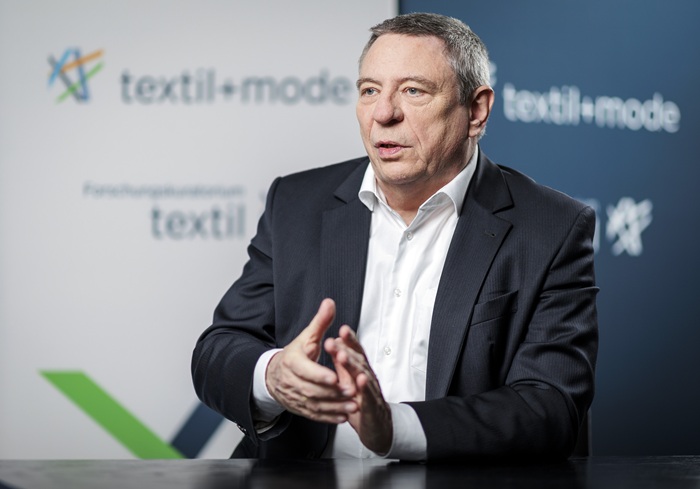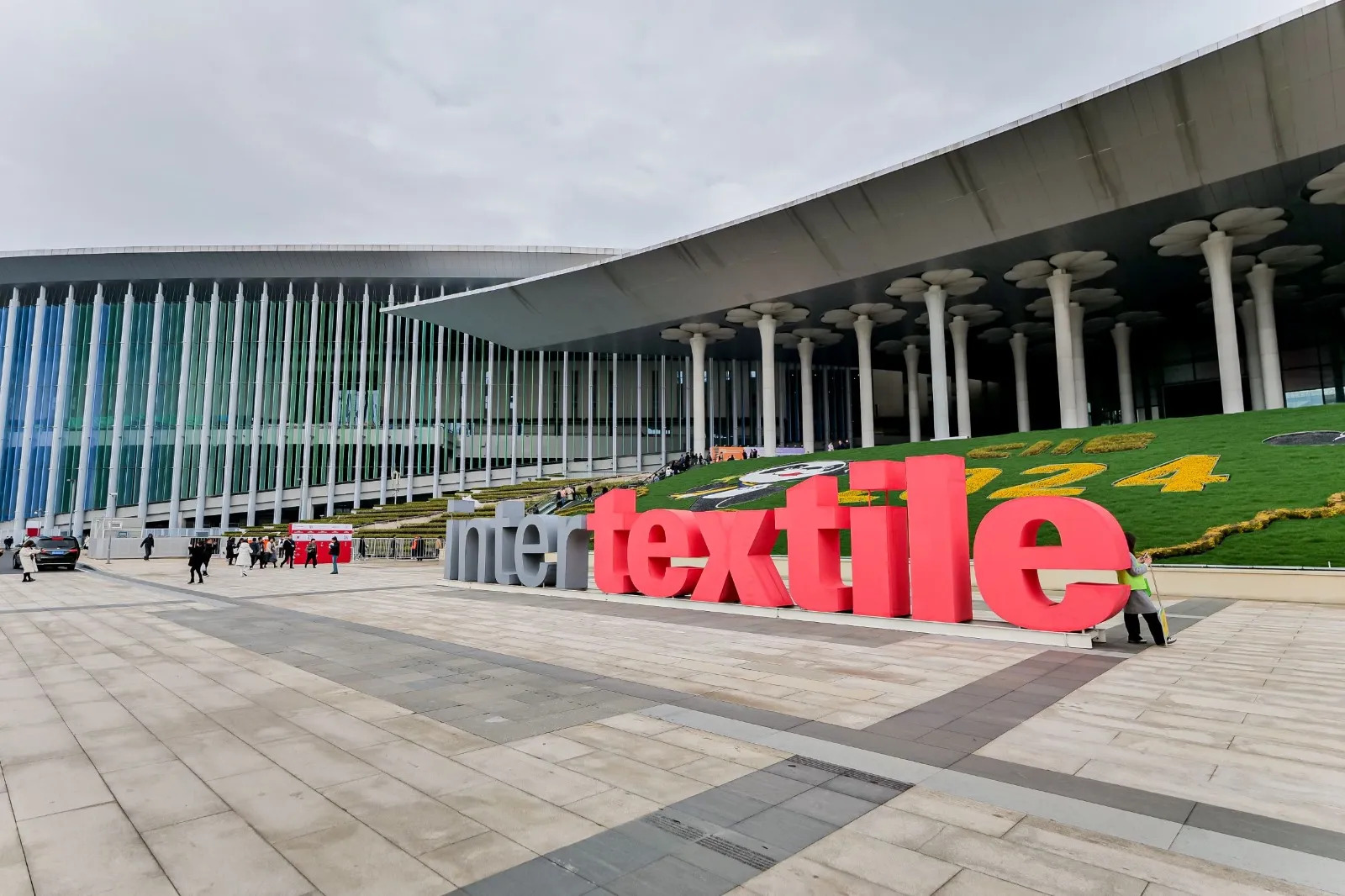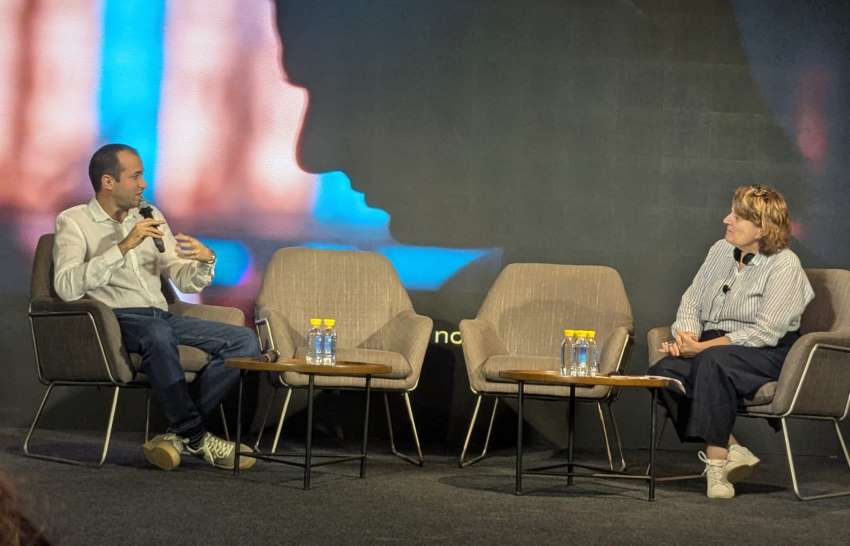FW
Sighting growth of the colourants markets in India and China, China Dyestuff Industry Association (CDIA), China Dyeing and Printing Association (CDPA) and CCPIT Shanghai Sub-council, the organisers of the China Interdye have announced the 5th Interdye Asia exhibition in Ahmedabad from December 3 to 5, 2015.
Interdye Asia 2015 is also supported by industry bodies such as CHEMEXCIL, DMAI, TAI, SGTPA and GPE Expo. According to the organisers, Gujarat was chosen as the venue for next edition of Interdye Asia since the state enjoys dominant position in colourant-manufacturing in India. China and India are now global leaders in the colourants fields with immense opportunities for further growth and consolidation, and thus it is natural for colourants industry of both the countries to come closer and collaborate, said the organisers of Interdye exhibition.
Interdye Asia has attracted wide attention and active participation from the international colourants industry. A show space will be occupied by 110 companies from China, India, Germany, and Thailand, such as Lonsen, Runtu, Yabang, Jihua, Transfar, JECO, Sunshine, Tianyuan, Color Root, Kedah, Zhijiang, Anoky, Boao, Zhenqing, Jingjin, Yorkshire, Modern, Atul, Meghmani, Vapchem, Jagson, Hindprakash, Gopinath and Saraf.
Exhibits on display would include all kinds of ecological and environmental-friendly dyes, organic pigments, printing and dyeing auxiliaries, relevant equipment and other products. The event will also witness a half day forum on industrial development, investment and industrial policy between China and India on December 3, 2015 at the exhibition venue. The next show will be held from April 13-15, 2016 at Shanghai World Expo Exhibition & Convention Centre in Shanghai, China.
www.chinainterdye.com
Cotton ginning units in India are suffering on the back of falling cotton prices, low margins and loans at high costs. As per the data, cotton prices continued to witness a decline from Rs 32,800 to Rs 32,000 per candy (356 kg) during the month of November.
According to Arvind Patel, Vice-President of Saurashtra Ginners’ Association (SGA), cotton ginners are facing tough times with declining export demand from leading buyers like China, which is also affecting their profit margins. Out of almost over 4,300 ginning units, about 1,300 are spread across Gujarat’s Saurashtra and North Gujarat and other regions. But some of them are now planning to shift to other business then cotton ginning due to low demand.
As per industry estimates, it requires about 1,000 kg of raw cotton to make one candy (356 kg) of cotton. The cost economics puts the total cost to make a candy at Rs 42,000-43,000, including processing cost, while the price stands at Rs 32,000 per candy. Raw cotton comprises of about 34 per cent of cotton, 63 per cent of cotton seed and about three per cent wastage. Seed fetches anywhere between Rs 390-410 per 20 kg, which leads a cotton ginner having to spend around Rs 44,000 per candy, including cotton and seed resulting in very low profit margin.
Now industry bodies such as Punjab Cotton Ginners’ Association have decided to approach the Union Finance Minister and the Reserve Bank of India (RBI), seeking financial support for the sector.
www.sgaindia.org
After the successful fourth edition of the Denimsandjeans event held in Dhaka, Bangladesh recently, which was around the theme of ‘Denim Playground’ keeping the impact of athleisure trend on denims in mind, the forthcoming edition to be held in March would focus on denim fashion. The 5th instalment of the show returns from March 2, 2016.
According to the organisers, the forthcoming show will revolve around the theme of Denim-in-Fashion with most celebrated designer denim brands from Alexa Chung for AG Jeans to Marques Almeida and even Prada adding style and touches history to create nostalgic collections of denims. With Prada’s spring 2015 menswear show, denim emerged as the catwalk trend, which was followed by Gucci’s sun-bleached or neat shirt-waisters with giant pockets, Dolce & Gabbana’s embellished women’s jeans with rhinestones and Burberry’s denim jacket for both men and women. The collection was a reminder of 70’s-style jeans with stitching highlighting pockets and boot-cut shapes, teamed with bobbly jumpers and flat sandals.
Prada, Louis Vuitton, Stella McCartney, Chloé – have also brought patchwork jeans to the global fashion scene against once universal cocktail dresses. Keeping the evolution of denim as a fashion statement in sight, Denimsandjeans decided to base its next edition on the theme of fashion denim. www.denimsandjeans.com
Isko is a premium denim brand based in Turkey. Isko will use the SAC’s sustainability metrics tool, the Higg Index, to drive environmental responsibility across its supply chain. Isko will contribute both data and resources to support the Higg Index, which gauges environmental sustainability and drives supply chain decision-making to better efficiency and sustainability impact.
The Higg Index is an open source, indicator-based tool that allows suppliers, manufacturers, brands and retailers to evaluate materials, products, facilities and processes based on environmental and product design choices.
There are currently more than 160 members of the SAC, including Adidas, C&A, Gap, H&M, Kohl's, Levi's, Macy's, Nike, Puma, REI, Target, and VF Corporation. The collaboration shows how industries can join hands and take significant steps forward in value chain performance. The effort also aims at driving better product sustainability over time.
Isko is part of the Sanko group, a multinational holding company characterised by a solid and well-established presence in the textile industry. Isko Denim is one of the world’s leading denim producers with 1,500 high tech automated looms, global distribution of employees and a production capacity of 250 million meters per year and a portfolio that includes more than 25,000 products.
www.isko.com.tr/about/
A nonwovens symposium was held in Turkey, November 10 and 11. The two day event saw 250 participants and 30 exhibitors, representing 121 companies and 24 countries. The symposium addressed the whole nonwovens supply chain from Turkey and its key trading partners, the general economic background, the nonwoven markets, raw materials, machinery and processes.
The aim was to reinforce trading links in nonwovens in a variety of applications from personal to healthcare and filtration to transportation and construction and make for sustainable growth of the whole supply chain of the nonwovens industry. Durable nonwovens were an integral part of the conference agenda. Production of nonwovens in Turkey grew by 20.3 per cent between 2009 and 2014 to reach 2,65,000 tons, representing 12 per cent of the greater European and nearly three per cent of the global output.
The session on machinery and processes sparked many questions from the audience, reflecting the importance of technology in producing nonwovens for the niche and main stream markets. A session on hygiene markets put sub-Saharan Africa in the spotlight as a huge potential market. The symposium is the second of its kind to be held in Turkey.
www.edana.org/education-events/.../Turkish-Nonwovens-Symposium
Students and Scholars Against Corporate Misbehavior (SACOM) has accused Japanese clothing giant Uniqlo, a part of the Fast Retailing Group for not acting against abusive working conditions and environmental pollution issues in its supplier factories in mainland China. The company despite acknowledging the said problems did not do anything to stop them, the labour rights groups in the country have said.
Four clothing factories manufacturing goods for the fashion chain were alleged to have abused workers by enforcing overtime work beyond legal limits, using toxic chemicals that harm the workers and pollute the environment and failing to pay for workers’ social insurance and housing fund premiums, according to Sophie Chen, project officer for SACOM.
In a report jointly conducted by SACOM and three other labour-related groups and issued in January, the factories were also alleged to have collected fines from workers who failed to meet certain job requirements and ignoring workplace safety.
In its response to the SACOM report, Uniqlo in its CSR report has said that it has increased monitoring of its textile suppliers, cut overtime working hours, and improved the working environment and management style since February.
www.uniqlo.com
sacom.hk
To get rid of the piled up cotton stocks of last year, the Trading Corporation of Pakistan (TCP) has announced a 10 percent advance tax exemption to woo buyers. The TCP’s move follows the Economic Co-ordination Committee’s (ECC) nod to retail the whole stockpiles on prices that Karachi Cotton Association (KCA) determines on a daily basis in a bid to offload the stored commodity without further delays and losses.
Buyers were earlier not keen to buy cotton stocks though TCP tried to offload the same due to 10 per cent advance tax on the procurement of cotton through tendering/auction process, which buyers had to pay. After continuous poor response in the tenders issued for the sale of cotton, the decision to retail sale of cotton on daily basis was taken at minimum KCA sport rate through commission agents. The TCP has also been asked to hire the services of commission agents through an open tender process as per the PPRA Rules.
As per the industry sources over the last three months, the TCP held around nine tenders for the sale of 95,400 cotton bales but was able to sell 10,800 cotton bales in two tenders, while remaining all were scrapped on technical grounds as the bidders/ buyers were not willing to pay 10 per cent advance tax on procurement of cotton through tendering/ auction process.
www.tcp.gov.pk
In a letter to its members, the Bangladesh Garment Manufacturers and Exporters Association (BGMEA) has said as per the rules under labour act RMG exporters would have to pay 0.3 per cent against total export to the workers’ welfare fund established by the government and financial assistance for the deceased and disabled workers and premiums of group insurance would be paid from the fund. For which biometric database of workers would be the important tool.
Following the tragic Rana Plaza building collapse in April 2013 that killed more than 1,100 people — mostly garment workers, the then BGMEA president, Atiqul Islam, had asked the BGMEA member factories to prepare a biometric database for their workers. Current BGMEA President Siddiqur Rahman has said that such database would be helpful to build a relationship between factory owners and workers as well identification of workers during crisis.
On May 20, 2013, he instructed factory owners at Ashulia in Dhaka to complete biometric database for their workers by August 30, 2013 that year but as of November 25 this year only 250 factories have enrolled names of their workers in the system. Factory owners need to be registered with the BGMEA paying fee for the biometric database. After the registration, IT experts working for the BGMEA will go to the respective factories for biometric capture of their workers.
According to the BGMEA letter, factory owners will have to pay from Tk 60,000 to Tk 1.95 lakh based on their manpower for completing biometric database at their factories.
www.bgmea.com.bd
Texprint’s third exhibition was held at the recently concluded Intertextile Shanghai Apparel Fabrics from October 13 to 15, 2015 sponsored by Messe Frankfurt (HK) and The Woolmark Company.
Designers Ciaran Moore and Jessica Leclere both exhibited at Intertextile, gaining an invaluable first experience of the Asian market. They were accompanied by Texprint representative Sarah Cheney. The stand was located in the new Verve for Design section of the textile fair. The signature print for the section was designed by Ciaran Moore and selected by Messe Frankfurt (HK).
The Woolmark Company funded space for Jessica Leclere, winner of the Woolmark Company Texprint Award, who showed her exciting and innovative knit collection. Examples of the work of other Texprint prize winners, including Emma McCluskey, Joanna Robins and Anja Alexandersdottir, were also displayed. Even three Texprint 2014 alumni designers – James Skinner, Jane Han Zhang and Tali Furman displayed their range at Intertextile Shanghai with their joint venture Fairbairn, Wolf and Skinner.
Texprint had support in Shanghai from two students, provided by Course Director Xi Chen of Zhejiang University, helping with interpreting. The exhibition received encouraging response from companies in Asia as well as Russia, Europe and North America. www.texprint.org.uk
A new research report published by Transparency Market Research suggests that the global cellulose fibres market is expected to grow at a CAGR of 9.80 per cent from 2012 to 2018. In the report, titled “Cellulose Fibres Market - Global Industry Analysis, Size Share, Growth, Trends and Forecast, 2012 - 2018”, industry experts have brought in a fresh perspective on the dynamics governing this market.
According to the report, the global cellulose fibres market was valued at $12.6 billion in 2011 and is expected to reach $24.1 billion by 2018. This stupendous growth will largely be attributable to changing lifestyles that are demanding environmentally-friendly fabrics. The increasing demand from the textile industry for biodegradable and skin- and environment-friendly fabrics is the primary driving force for the global cellulose fibres market. In addition to this, demand from end-use industries that are trying to replace petrochemical fibres with cellulose fibres is also pushing the global cellulose fibres market towards success.
Despite the powerful market drivers, the global cellulose fibres market is being restrained by fluctuating wood pulp prices. This market is also being held back by tough regulatory issues related to environmental concerns. However, as the concept of manufacturing cellulose fibres by using renewable sources materialises, it will create a new opportunity for this market. The market is segmented on the basis of application and geography. The applications of cellulose fibres are seen in spun yarn, fabrics, clothing, and others such as sealants, tapes, and adhesives. Geographically, this market is divided into Europe, North America, Asia Pacific, and Rest of the World.
The biggest consumer of cellulose fibres is the clothing industry, which held a share of 60 per cent in 2011. Analysts predict this will also be the fastest growing segment in the forecast period, as regenerated forms of cellulose fibres such as tencel, rayon, lyocell, modal, corn fibres, viscose, and many others forms are extensively used in the clothing industry. This segment is estimated to grow at a CAGR of 7.60 per cent from 2012 to 2018. In terms of volume, the demand for cellulose fibres used in making spun yarn is calculated to reach a whopping 953.1 kilo tons by 2018, pacing ahead at a steady CAGR of 7.30 per cent from 2012 to 2018.
www.transparencymarketresearch.com/cellulose-fibers-market.html












